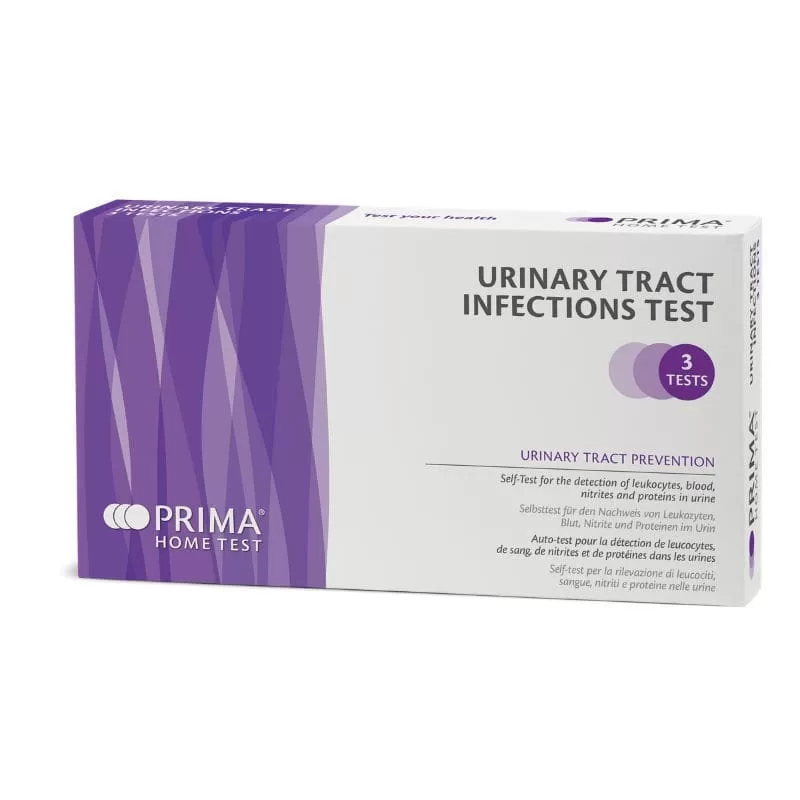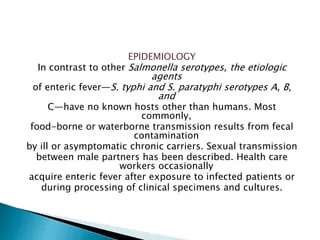The rapid test for urinary tract infections (UTIs) represents a groundbreaking advancement in the diagnosis and treatment of this common yet often debilitating condition. Recently awarded the Longitude Prize, the PA-100 AST System by Sysmex Astrego is revolutionizing how UTIs are detected, using cutting-edge nanofluidic technology to provide results in as little as 15 minutes. This innovative rapid UTI test not only identifies the presence of bacteria in urine samples but also conducts an antimicrobial susceptibility test, allowing healthcare professionals to swiftly determine the most effective antibiotic treatment. With its ease of use and reduced need for specialized lab technicians, this system is set to enhance urinary tract infections diagnosis worldwide. Such rapid innovations are essential in the fight against antimicrobial resistance, aligning perfectly with global health initiatives aimed at improving patient care.
Urinary tract infections (UTIs) often require timely and accurate diagnostic practices to prevent complications and ensure effective treatment. The recent advancements in rapid testing technology, including systems like the PA-100 AST developed by Sysmex Astrego, highlight the importance of prompt diagnosis in combating these infections and related antimicrobial resistance. By streamlining the urinary infections diagnosis process, these rapid tests not only improve patient outcomes but also align with broader healthcare goals, such as the increased focus on antimicrobial stewardship. The ability to swiftly identify both the infection and suitable treatment options represents a significant leap forward in public health. As researchers and healthcare professionals continue to innovate in diagnostic methodologies, we can anticipate even more effective solutions for managing UTIs.
The Significance of Rapid Tests for Urinary Tract Infections
Rapid tests for urinary tract infections (UTIs) have emerged as a crucial diagnostic tool in modern healthcare. The quick identification of the causative bacteria and their antibiotic susceptibility is essential for effective treatment. Traditional methods often involve lengthy laboratory processes that delay diagnosis and treatment, which can lead to complications such as kidney infections or sepsis. With the introduction of innovative technologies, like the PA-100 AST System developed by Sysmex Astrego, healthcare providers can now perform UTI diagnostics at an unprecedented speed. These advancements not only save time but also significantly enhance patient outcomes by allowing for timely antibiotic therapy.
Furthermore, rapid tests play a vital role in combating antimicrobial resistance (AMR), a pressing global health issue. By quickly identifying the responsible pathogens and their resistance patterns, healthcare professionals can make informed decisions about antibiotic prescriptions. This targeted approach minimizes the misuse of antibiotics, ultimately preserving their effectiveness. The recent recognition of Sysmex Astrego with the Longitude Prize underscores the importance of investing in rapid testing solutions that align with antimicrobial stewardship initiatives. As the healthcare landscape continues to evolve, the significance of rapid tests will only increase, paving the way for more effective and efficient UTI management.
How Sysmex Astrego’s Innovation is Transforming UTI Diagnosis
Sysmex Astrego’s PA-100 AST System stands out in the field of rapid UTI diagnostics through its utilization of nanofluidic technology. This cutting-edge innovation allows for the detection of bacteria in urine samples within 15 minutes, followed by identifying the most effective antibiotics in as little as 45 minutes. Such rapid turnaround times disrupt the conventional diagnostic timelines that typically span hours to days. The ability to conduct these tests without requiring specialized laboratory skills makes them accessible to a wider range of healthcare settings, particularly in low-resource environments where UTI prevalence is often high.
The implications of such technology extend beyond immediate patient care. With the ongoing challenge of AMR, the PA-100 AST System positions itself as a game-changer by enabling proactive management of UTIs. Early and accurate detection not only improves patient treatment but also contributes to better surveillance of antibiotic resistance patterns. As demonstrated by the Longitude Prize recognition, this innovation aligns with global health efforts to prioritize diagnostics that address urgent public health challenges. By transforming UTI diagnosis, Sysmex Astrego is not only enhancing clinical practice but also contributing to the broader fight against antimicrobial resistance.
The Role of Antimicrobial Susceptibility Testing in UTI Management
Antimicrobial susceptibility testing (AST) is a critical component in the management of urinary tract infections (UTIs), guiding appropriate treatment decisions that can alter patient outcomes significantly. By determining the susceptibility of the infecting bacteria to various antibiotics, AST ensures that healthcare providers can select the most effective treatment option, thereby reducing the time patients remain symptomatic and minimizing complications. The rapid tests developed, such as the PA-100 AST System, automate this process, which traditionally involved tedious laboratory procedures and delayed diagnosis.
In the context of the rising AMR crisis, implementing robust antimicrobial susceptibility tests is more important than ever. These tests enable clinicians to identify resistant strains early, thereby curbing the inappropriate use of antibiotics that can exacerbate resistance development. As health organizations and specialists advocate for improved diagnostic methods, rapid susceptibility testing emerges as a cornerstone in personalized medicine approaches for UTI management. By integrating such advanced testing into routine clinical practice, the healthcare sector can enhance treatment outcomes while strategically tackling AMR challenges.
Advancements in Diagnostic Technologies for UTI Management
The evolution of diagnostic technologies has drastically changed the landscape of urinary tract infection management. With conventional diagnostic methods often prolonged and labor-intensive, innovations like the PA-100 AST System propel the field forward by offering rapid and reliable results. This not only facilitates quicker clinical decision-making but also empowers patients with timely treatment, promoting faster recovery and improving quality of care. The technological leap allows for at-point-of-care testing, making it particularly beneficial in rural and underserved areas where access to sophisticated laboratory facilities may be limited.
Moreover, advancements in UTI diagnostics are aligned with global health initiatives aimed at improving healthcare delivery systems. The recent acknowledgment of rapid UTI tests in the context of the Longitude Prize reflects a broader commitment toward enhancing global health by ensuring that even low-resource settings can implement effective diagnostic measures. By harnessing the power of innovative technologies, we are witnessing a shift toward more sustainable healthcare practices that prioritize patient-centric approaches while addressing pressing global health concerns.
The Future of UTI Diagnostics and Treatment Strategies
Looking ahead, the future of urinary tract infection diagnostics is poised for significant advancements, particularly with the integration of rapid testing methodologies like those developed by Sysmex Astrego. Automated tests not only streamline the diagnostic process but also create opportunities for developing tailored treatment strategies based on specific susceptibility profiles of UTI pathogens. This personalized approach is integral to modern medicine and indicates a shift towards more efficient healthcare systems that are responsive to individual patient needs.
Additionally, the collaboration between diagnostic developers and global health organizations signifies a proactive stance in addressing public health challenges, including antimicrobial resistance. Research initiatives, like those supported by the Longitude Prize, pave the way for continued innovation within the field and ensure that diagnostics evolve in conjunction with emerging bacterial resistance patterns. As healthcare providers increasingly adopt rapid UTI tests, we can expect an era of enhanced patient care that prioritizes timely diagnosis and effective treatment.
Why Antimicrobial Stewardship is Essential for UTI Management
Antimicrobial stewardship is a crucial practice in the effective management of urinary tract infections (UTIs), aimed at optimizing antibiotic use to combat the rising threat of antimicrobial resistance. By ensuring that patients receive the right antibiotic for their specific infection, healthcare providers can not only improve clinical outcomes but also contribute to the preservation of antibiotic effectiveness for future generations. Rapid tests, such as those developed for UTI diagnostics, are pivotal in this endeavor, allowing providers to initiate targeted therapies swiftly and accurately.
The integration of antimicrobial stewardship principles into everyday clinical practice helps cultivate a culture of responsible antibiotic prescribing. As rapid UTI tests gain traction in healthcare settings, they serve as foundational tools to guide physicians in making informed decisions based on real-time data regarding pathogen susceptibility. This proactive approach not only mitigates the risks associated with UTI treatment but also plays a key role in larger public health efforts to curb the growing incidence of drug-resistant infections.
The Impact of Quick Diagnostics on Patient Outcomes
The advent of rapid diagnostics has transformed the patient experience in managing urinary tract infections. Patients historically faced long wait times for test results, during which symptoms could worsen and lead to further complications. Now, with systems like the PA-100 AST providing results in as little as 15 minutes, healthcare providers can initiate appropriate treatment promptly, dramatically improving patient comfort and satisfaction. Quick diagnostics alleviate anxiety and pave the way for faster recovery, exemplifying the direct correlation between diagnostic speed and effective patient care.
Moreover, timely intervention facilitated by rapid diagnostics may lead to reduced hospital visits and healthcare costs, benefitting both patients and healthcare systems. As we witness a shift towards value-based care, distinguishing oneself through innovative diagnostic solutions is imperative. The recognition of rapid UTI tests as integral components of patient management reflects a broader understanding of the importance of timely action in achieving favorable health outcomes.
Low-Cost Solutions and Their Importance in UTI Testing
The accessibility of low-cost diagnostic solutions holds immense potential for transforming urinary tract infection testing, particularly in economically disadvantaged areas. Many regions still struggle with limited healthcare resources, resulting in delayed diagnoses that can exacerbate patient conditions. By offering affordable rapid tests, organizations can ensure that even those in the most underserved populations receive timely and effective care. Innovations like the PA-100 AST System align with this vision by striving to make rapid UTI diagnostics accessible to all.
Incorporating cost-effective solutions into healthcare frameworks is essential not only for improving individual patient outcomes but also for addressing public health challenges. Ensuring that rapid UTI tests are available in low-income settings supports the broader ambitions of combating AMR by promoting appropriate antibiotic use in communities that need it the most. As healthcare increasingly prioritizes equity, the development and distribution of low-cost diagnostic tools will play a critical role in ensuring that everyone, regardless of socioeconomic status, has the opportunity to receive effective treatment for UTIs.
Collaborations Shaping the Future of UTI Diagnostics
Collaborations between diagnostic innovators and healthcare institutions are vital for shaping the future of urinary tract infection diagnostics. By pooling expertise and resources, organizations can drive research and development efforts that result in more sophisticated and effective diagnostic solutions. The partnership exemplified by Sysmex Astrego’s PA-100 AST System illustrates how collaborative progress can lead to groundbreaking advancements in rapid testing capabilities. Such partnerships streamline the path from development to market, facilitating wider access to critical diagnostic technologies.
In addition, these collaborations often extend to global health initiatives, aiming to address not only local but also international health challenges. The Longitude Prize highlights the significance of working together toward a common goal: improving access to diagnostics that can directly impact health outcomes and tackle the global threat of antimicrobial resistance. Through these collaborative efforts, the future of UTI management is set to enhance the quality of care while fostering a more sustainable and resilient healthcare landscape.
Frequently Asked Questions
What is a rapid test for urinary tract infections (UTIs)?
A rapid test for urinary tract infections (UTIs) is a diagnostic tool that allows for the quick detection of bacteria in a urine sample. Unlike traditional lab tests that can take days, rapid UTI tests can deliver results in as little as 15 minutes, enabling prompt diagnosis and treatment.
How does the Sysmex Astrego rapid test for urinary tract infections work?
The Sysmex Astrego rapid test for urinary tract infections operates using advanced nanofluidic technology that analyzes urine samples. It quickly identifies the presence of bacteria and, within 45 minutes, determines the appropriate antibiotic treatment, thus aiding in effective antimicrobial stewardship.
What are the benefits of using a rapid UTI test compared to traditional methods?
Using a rapid UTI test provides several benefits over traditional methods, including faster results that facilitate timely treatment, reduced need for specialized lab skills, and the ability to test in various settings. This quick diagnosis is crucial for managing urinary tract infections effectively and reduces the risk of complications.
What is the significance of the Longitude Prize for the rapid test for urinary tract infections?
The Longitude Prize for the rapid test for urinary tract infections highlights significant advancements in diagnostic technology aimed at combating antimicrobial resistance. The award recognizes Sysmex Astrego’s efforts to innovate a cost-effective and efficient antimicrobial susceptibility testing system that can improve patient care globally.
Can a rapid test for urinary tract infections replace culture tests?
While a rapid test for urinary tract infections offers quick results, it may not entirely replace culture tests, which provide detailed information about the bacteria present. However, rapid tests are invaluable for immediate decision-making in treatment and can complement culture tests for comprehensive diagnostics.
What impact does the rapid UTI test have on antimicrobial susceptibility testing?
The rapid UTI test has a significant impact on antimicrobial susceptibility testing by allowing healthcare providers to quickly determine the most effective antibiotics to treat the infection. This capability is crucial in reducing the misuse of antibiotics, thus fighting against the growing issue of antimicrobial resistance.
Who developed the rapid test for urinary tract infections that won the Longitude Prize?
The rapid test for urinary tract infections that won the Longitude Prize was developed by Sysmex Astrego AB in collaboration with researchers from Sweden’s Uppsala University. The PA-100 AST System is a major advancement in rapid diagnostics for UTIs.
What role does the PA-100 AST System play in urinary tract infection diagnosis?
The PA-100 AST System plays a pivotal role in urinary tract infection diagnosis by using nanofluidic technology to provide rapid detection of urethral pathogens within minutes. This system streamlines the process of diagnosing UTIs and selecting appropriate antibiotic treatment, significantly improving clinical outcomes.
Is the rapid test for urinary tract infections available for use in various healthcare settings?
Yes, the rapid test for urinary tract infections is designed for use in various healthcare settings, including clinics and urgent care facilities, due to its ease of use and the minimal requirement for specialized laboratory skills.
How does winning the Longitude Prize benefit Sysmex Astrego and the development of rapid UTI tests?
Winning the Longitude Prize provides Sysmex Astrego with recognition and visibility, accelerating its efforts to expand the market for rapid UTI tests globally. This recognition also attracts funding and collaboration opportunities, fostering ongoing innovation in antimicrobial susceptibility testing.
| Key Point | Details |
|---|---|
| Winning of Longitude Prize | The Longitude Prize on antimicrobial resistance was awarded to Sysmex Astrego AB for their rapid antimicrobial susceptibility test for UTIs. |
| Technology Used | The PA-100 AST System uses nanofluidic technology to detect bacteria in urine within 15 minutes and identify appropriate antibiotics in as little as 45 minutes. |
| Access and Implementation | The system doesn’t require specialized laboratory skills, making it widely accessible for quick testing. |
| Launch Information | Sysmex Astrego launched the PA-100 AST System in Europe in 2023. |
| Impact of Winning | The Longitude Prize recognition will help Sysmex Astrego expand its market efforts for the rapid test. |
Summary
The rapid test for urinary tract infections, exemplified by Sysmex Astrego’s PA-100 AST System, marks a significant advancement in antimicrobial resistance detection. This innovative test, which can identify bacteria and recommend treatment within minutes, is crucial for timely medical intervention. Additionally, its award through the Longitude Prize underscores the global imperative and recognition of such technologies in improving healthcare outcomes and combating antibiotic resistance.
The content provided on this blog (e.g., symptom descriptions, health tips, or general advice) is for informational purposes only and is not a substitute for professional medical advice, diagnosis, or treatment. Always seek the guidance of your physician or other qualified healthcare provider with any questions you may have regarding a medical condition. Never disregard professional medical advice or delay seeking it because of something you have read on this website. If you believe you may have a medical emergency, call your doctor or emergency services immediately. Reliance on any information provided by this blog is solely at your own risk.








